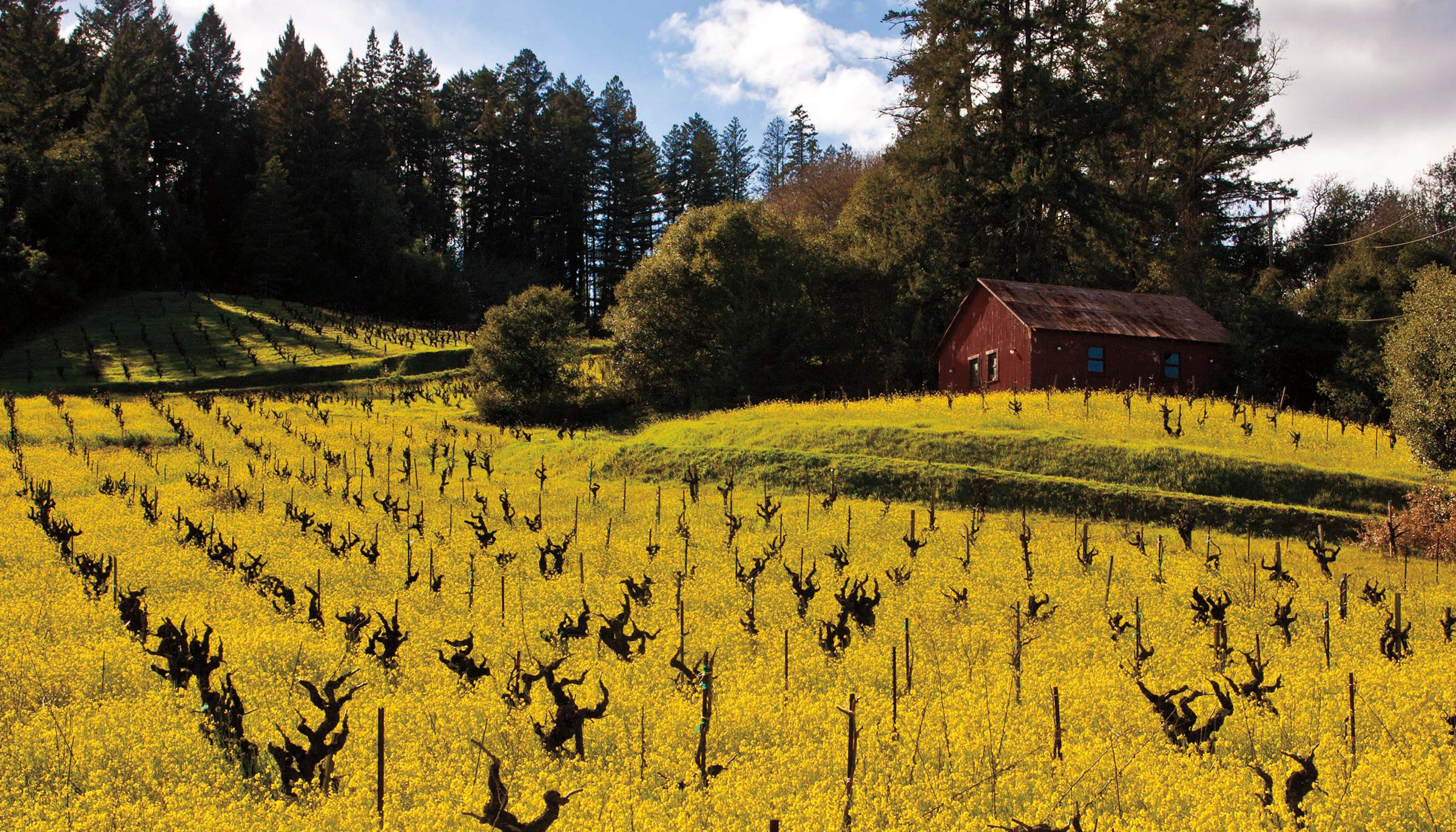Green building
Whether building from the ground up or retrofitting an existing structure, California wineries embrace environmentally sensitive architecture and design, as well as building strategies that make use of natural and recycled materials. The buildings also employ both long-established and modern-day practices to reduce energy consumption and their environmental footprints.
Architectural design
In addition to solar panels–a common sight in wine country–wineries use natural materials such as rock, rammed earth and even hay bales to create thick walls that help to retain cool air. Underground caves keep wine at an ideal temperature without air conditioning. Retractable roofs open at night for ventilation, keeping tanks and barrels cool with minimal use of air conditioning or refrigeration.
Recycled materials
Tasting rooms, offices and other winery spaces in California routinely use stone or timber reclaimed from existing structures, adding character as well as giving these materials a second life.
Gravity flow
Winemakers use the force of gravity to move grapes and wine through the stages of production, eliminating the need for pumps or other machinery. California wineries use this time-honored technique to save energy and handle fragile grapes in the gentlest way possible.
Winery water
Water is necessary in the winemaking process from crushing to bottling, yet California wineries have found innovative ways not only to reduce water usage but also to recycle and reuse this precious natural resource.
Process water ponds
Process water ponds are a feature of many California wineries, where water is discharged after being used for cleaning and sterilizing equipment and facilities. The water in these ponds is treated and reused. Some wineries have installed new technology such as “biodigesters” or other types of water treatment systems that safely treat discharged water for reuse.
Habitat/wetland benefits
California wineries reuse water discharged from the winery to create wetland areas that become habitat for water fowl and other wildlife. Though it requires several extra steps in terms of water purification, wineries have found that the beauty and biodiversity generated by these wetlands is well worth the effort.
Reduce & reuse water
California wineries actively track usage and engage employees to conserve water and regularly test equipment for water efficiency. Additionally, water is often reused for landscape irrigation, frost and fire protection, fountains and other agricultural interests.
Winery energy efficiency
Throughout the state, California wineries have invested in and adopted energy efficiency measures to conserve natural resources and to minimize energy costs. Alternative sources of energy, including solar and wind power, have been widely adopted by the California wine industry.
Efficient Equipment
Use of insulated tanks to cool or heat wine reduces the need for heating and refrigeration, as does installing timed door openers in winery buildings to help keep cool air in and hot air out during California’s warm summer days. New energy-efficient technologies in the motors, drives and pumps commonly used in wineries have also been widely adopted.
Lighting
Many California wineries have implemented energy efficient lighting systems by replacing incandescent light bulbs with compact fluorescent light bulbs, installing automatic controls to turn lights on or off and installing “task” lighting which illuminates only those areas needed at the time. Building design uses natural light where possible.
Solar
Perhaps it’s only natural that with so much sunshine in California, wineries here have flocked to solar power as an alternative energy source. Some wineries are able to provide 100% of their energy needs–both in the winery and vineyard–through the use of solar panels and even generate additional energy to send back to the grid.
Waste reduction, training & eco-purchasing
California wineries address solid waste management through a robust recycling program, employee training and implementation program, and environmentally-friendly purchasing for supplies from glass to corks and more. The wine industry is able to excel in solid waste reduction because the majority of solid waste generated by a winery (e.g., pomace, lees, cardboard, paper, glass) can be reused or recycled.
Reduce, reuse, recycle
Common practices at California wineries include: recycling paper, plastic, cardboard and glass; creating compost areas in meeting and lunch rooms; and converting grape pomace and lees (byproducts of winemaking) to compost for use in vineyards and landscaping. Natural cork (in tasting rooms, for example) is recycled, and wineries reuse oak barrels by shaving and re-toasting them or donating them to schools or community centers for various uses.
Employee training
Employee training is crucial to developing a comprehensive waste reduction program in any business. Many California wineries put together “green teams” with employees from different parts of the operation to set goals, implement reduction practices and monitor improvement. Internal communication between all winery and vineyard personnel promotes awareness and participation.
Environmentally preferable purchasing
California wineries work with multiple suppliers who provide everything from glass, paper, cardboard boxes, capsules and corks to vineyard supplies, office equipment, vehicles and cleaning products. Wineries set sustainability criteria for suppliers, requiring packaging supplies to incorporate recycled or post-consumer content and vendors to take back excess supplies the winery doesn’t use. Many wineries use soy-based inks and unbleached, chlorine-free cardboard for shipping boxes.












